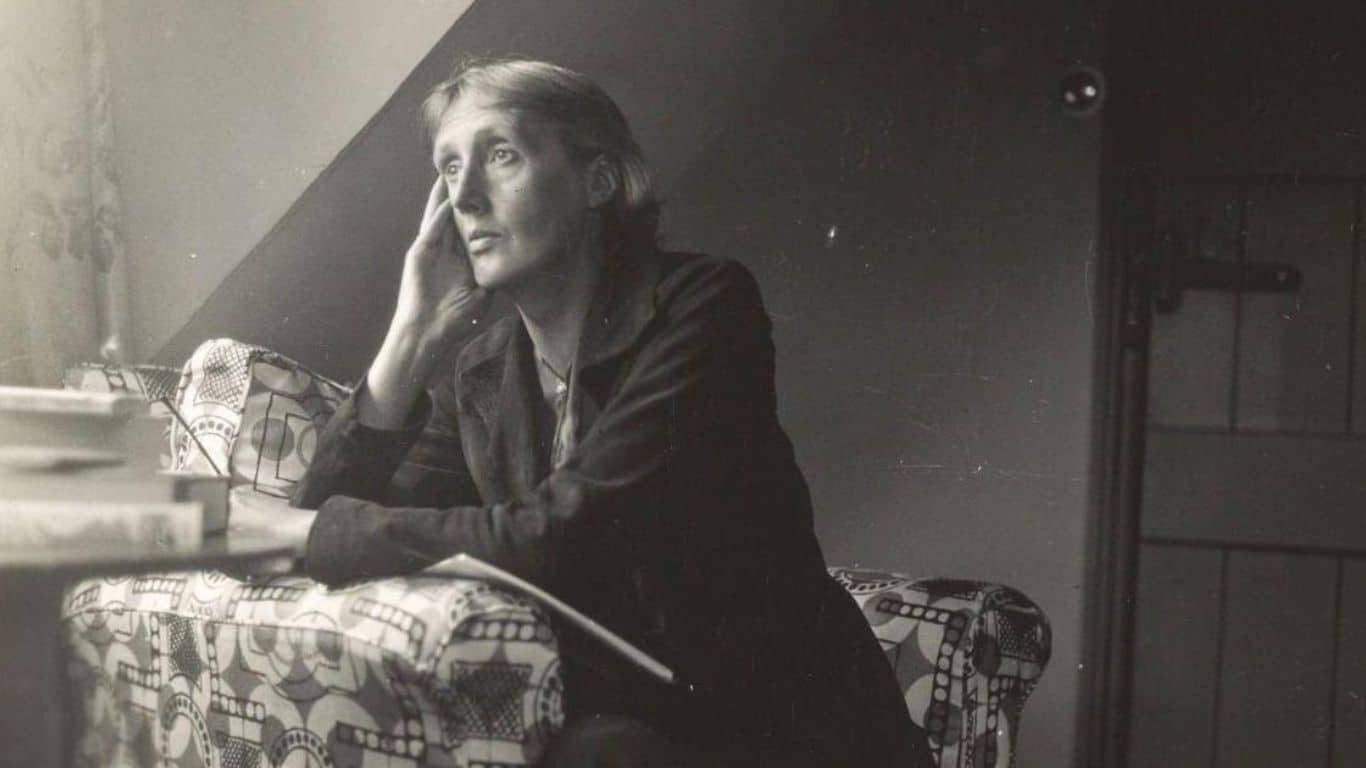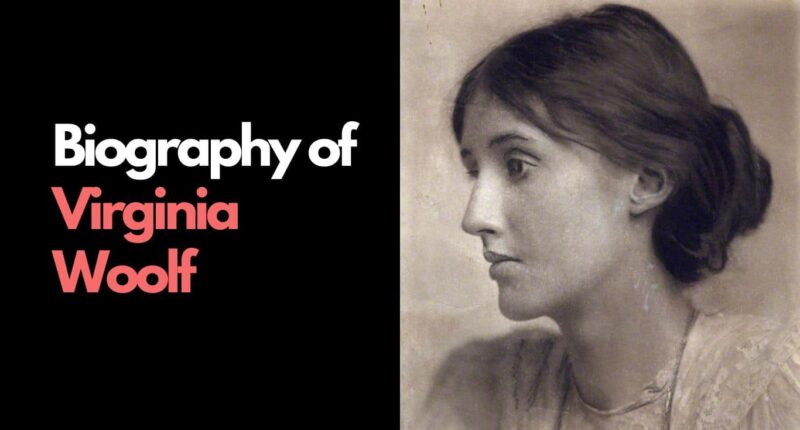Biography of Virginia Woolf: Adeline Virginia Stephen was born on 25 January 1882 in South Kensington, London. English writer Virginia Woolf was one of the most influential modernist 20th-century century writers. She is considered a pioneer of the stream of consciousness as a narrative device. During the inter-war period, she was a significant part of London’s literary and artistic society. In 1915, through her half-brother’s publishing house Gerald Duckworth and Company, she published her first novel The Voyage Out. She became one of the central topics of the 1970s movement of feminist criticism and since then her work has drawn much attention to feminism. Her popular works include Room of One’s Own, Orlando, To the Lighthouse, and Mrs Dalloway.
Virginia was a part of a family of a blended family. She was the seventh child of Sir Leslie Stephen and Julia Prinsep Jackson. Her sister was a popular modernist painter Vanessa Bell. Woolf was homeschooled in Victorian literature from a young age. From 1897 to 1901, she studied classics and history at King’s College London. During this time she became involved with the women’s rights movement and early reformers of women’s higher education. Woolf began writing professionally in 1900.
In 1912, she married Leonard Woolf and in 1917, Leonard and Virginia founded the Hogarth Press. Several of her writings were published by Hogarth Press. She also had romantic relationships with women including writer Vita Sackville-West.
Throughout her life, Woolf suffered from mental illness. She was institutionalized a few times and attempted suicide about twice. Her illness had symptoms that would today be diagnosed as bipolar disorder. There were no effective treatments for bipolar disorder during her lifetime. At the age of 59 in 1941, Virginia Woolf died by drowning herself in the River Ous at Lewes.

Bloomsbury Group
Bloomsbury Group was a group of associated English intellectuals, writers, artists, and philosophers in the first half of the 20th century. The group included Virginia Woolf, Leonard Woolf, Vanessa Bell, Clive Bell, Roger Fry, Desmond MacCarthy, Mary MacCarthy, Duncan Grant, E. M. Forster, John Maynard Keynes, and Lytton Strachey. This group of friends and family was associated with King’s College London for the women and the University of Cambridge for the men in the group. They all studied and worked together near Bloomsbury, London. Even though the members refused to call it a group formally, however their strong sense and belief in the importance of arts makes them a group. Their outlook and works profoundly influenced aesthetics, literature, criticism, feminism, sexuality, pacifism, and economics.
Mrs Dalloway
One of the most popular works of Virginia Woolf, Mrs Dalloway was published in 1925. In 2005, the novel was included in the list of Time Magazine’s 100 best English-language novels written since its first issue in 1923. Dutch filmmaker Marleen Gorris adapted Mrs Dalloway in 1997, starring Rupert Graves, Natascha McElhone, Lena Headey, and more. The Hours (2002) directed by Stephen Daldry depicts the life of three women (played by Meryl Streep, Nicole Kidman, and Julianne Moore) affected by Mrs Dalloway.
The novel focuses on the life of Clarissa Dalloway who goes around London in the morning, getting ready to host a party that evening. This day makes her recall the memories of her youth in the Bourton countryside and makes her think of the choice of husband. She is married to Richard Dalloway instead of Peter Walsh, and she did not have the option to be with Sally Seton. Peter reintroduces all these internal conflicts in her by paying a visit that morning.
A World War I veteran, Septimus Smith suffering from deferred traumatic stress spends his day with his wife Lucrezia in the park where Peter observes them. Septimus is visited by frequent hallucinations, primarily regarding Evans, a friend who died in the war. Later that day, after getting into a psychiatric hospital, Septimus commits suicide. Clarissa’s evening party was a slow success with several people from the past as well. When she hears about the suicide she admires the act of this stranger as she considers it an effort to preserve the purity of happiness.
To the Lighthouse
Virginia Woolf described To the Lighthouse (1927) as “easily the best of my book.” Her husband Leonard Woolf thought it an “entirely new ‘a psychological poem’”. She started writing this novel partly as a way to understand and deal with unresolved issues concerning her parents. There are several similarities between the plot of the book and her life. The novel focuses on the Ramsay family and their visits to the Isle of Skye in Scotland between 1910 and 1920. Two major themes of this work are the complexity of experience and the complexity of human relationships. A fundamental motif of the novel is the conflict between the masculine and feminine principles at work in the universe. The lighthouse itself symbolizes a lack of attainability.

Orlando
1928 published novel Orlando is inspired by the family history of the aristocratic poet and novelist Vita Sackville-West. Vita Sackville-West was Woolf’s close friend and lover. Woolf and Vita were both members of the Bloomsbury Group. They began a romantic and sexual relationship that lasted for about a decade and then it turned into a friendship. The book focuses on the adventures of a poet who changes his sex from man to woman and lives for centuries, meeting the significant figures of English literary history. It is considered one of the best feminist classics. Sackville West’s son, Nigel Nicolson wrote “The effect of Vita on Virginia is all contained in Orlando, the longest and most charming love letter in literature…”
A Room of One’s Own
1929 published A Room of One’s Own is an extended essay based on two lectures Virginia Woolf delivered at Newnham College and Girton College, women’s colleges at the University of Cambridge in 1928. In her essay, she uses metaphors to explore social injustices and comments on the lack of free expression when it comes to women. “A woman must have money and a room of her own if she is to write fiction.” Woolf talks about the influence of a woman’s social expectations as just a child bearer. As she starts to think of an idea, a guard enforces a rule whereby they are restrained and are not allowed to be free and think the way they want.
Woolf’s theory can be extended to several political circumstances. She suggests that the absence of female fiction is a result of a lack of opportunity rather than the absence of talent. Women have been marginalized for decades and the patriarchy dominated literature. When the ‘new woman’ emerged the awareness of injustice made a clear political statement regarding women’s intellectual potential in their own right.
Also Read: Biography of Leo Tolstoy | Life and Literary Works



